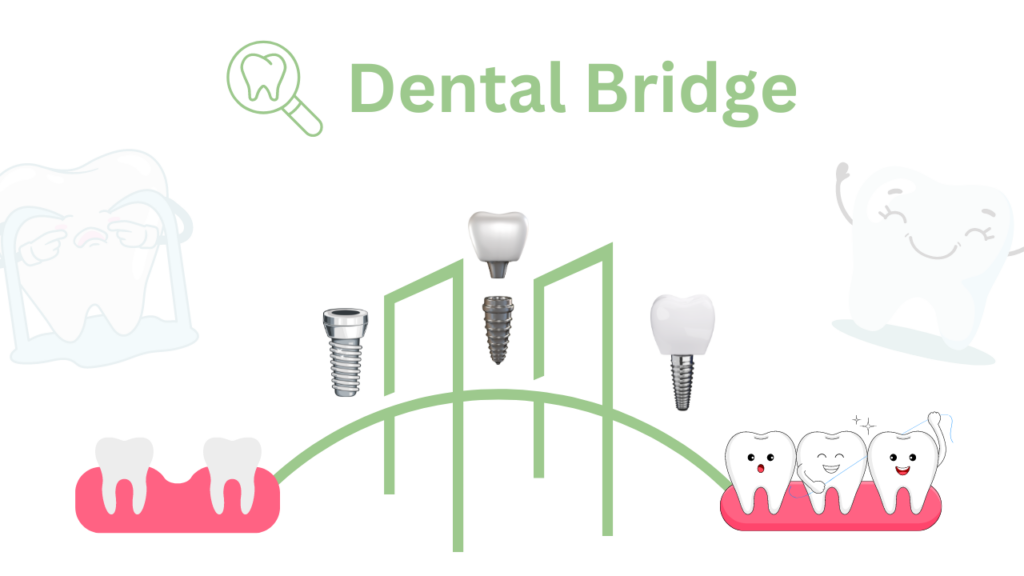Dental Bridge Cost

Dental Bridge: An In-Depth Overview
Replacing teeth that are missing has become much easier with the introduction of dental implant bridges, which are now considered a better choice than the old ways. This article will explore the different parts of dental implant bridges, such as their definition, advantages, the price factors involved, and additional details.
What is a Dental Bridge?
A dental bridge is a dental restoration option that utilizes implants to hold a bridge in place. Unlike conventional bridges that depend on neighboring teeth for stability, dental implant bridges are securely fixed into the jawbone, offering a more secure and long-lasting option.
Benefits of a Dental Bridge
- Increased Durability: Dental bridges provide unmatched durability, as they are securely fixed into the jawbone, replicating the natural root system of teeth.
- Sustainability: With the right maintenance, dental implant bridges can endure for a lifetime, rendering them a wise investment for the long haul.
- Maintenance of Jawbone Health: Dental implants encourage the growth of jawbone, avoiding the bone deterioration that frequently happens with missing teeth.
- Better Looks and Functionality: Dental implant bridges appear and perform as if they were natural teeth, improving both the look and the ability to chew.
- No Alteration Required for Surrounding Teeth: Dental implant bridges are different from conventional bridges, as they do not necessitate any changes to the teeth next to them.
Kinds of Dental Bridges Supported by Implants
- Permanent Dental Implant Bridges: These are securely fixed and require a dentist’s assistance for removal.
- Temporary Dental Implant Bridges: These are detachable and the patient is able to remove them for cleaning.
Determining the Price of an Dental Bridge Cost.
The expense of getting an implant bridge can differ due to a variety of elements:
Dental Need for Implants: The greater the number of dental implants required, the higher the expense.
Bridge Material: The kind of material employed in the bridge, whether porcelain or zirconia, can influence the total cost.
Location Matters: Expenses can show a considerable difference based on the area and the particular dental clinic.
Extra Treatments: Processes such as bone grafts may increase the total cost.
On a general note, the price of a bridge supported by dental implants can range from
Bridges |
|
Porcelain Bonded Non-Precious Metal Bridge | From £790 |
Zirconia/ E-max Bridge | From £890 |
Re-Cementation (per unit) | From £85 |
Maryland – For Two to Three Units | From £650 |
Implants |
|
Implant Consultation | From £150 |
Implant | From £2,350 |
Implant Crown | From £925 |
Bone Graft | From £895 |
. It’s crucial to discuss your situation with your dentist to receive an accurate quote customized to your individual circumstances.
The Procedure: What to Expect
- First Meeting: Your dentist will assess your dental condition, capture images with X-rays, and devise a plan for treatment.
- Insertion of Implants: The dental implants are inserted into the jawbone through surgery.
- Recovery Time: It usually requires a few months for the implants to bond with the jawbone (osseointegration).
- Attachment of Abutments: After recovery, the abutments are connected to the implants.
- Bridge Installation: In the end, a specially designed bridge is fitted onto the abutments.
Caring for Your Implant Bridge
- Maintain Good Oral Hygiene: Brush and floss regularly to keep the implant area clean.
- Regular Dental Visits: Regular check-ups ensure that your implant bridge remains in good condition.
- Avoid Hard Foods: Steer clear of foods that could damage the bridge.
Implant Bridge vs. Traditional Bridge: A Comparison
- Support: Traditional bridges rely on adjacent teeth, whereas implant bridges are anchored in the jawbone.
- Durability: Implant bridges are generally more durable and long-lasting.
- Oral Health: Implant bridges help maintain jawbone health, while traditional bridges do not.
Conclusion
Dental implant bridges represent a groundbreaking innovation in dental repair, providing unmatched support, appearance, and durability. Although the upfront cost may be greater than conventional approaches, the enduring advantages justify it as a viable option for individuals seeking to rejuvenate their smile and dental functionality.









